ARTICLE AD BOX
Yolande Knell
BBC Middle East correspondent, Jerusalem

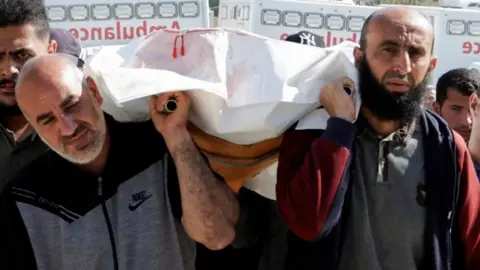 Reuters
Reuters
Gaza's Hamas-run health ministry says more than 51,200 Palestinians have been killed
At al-Shifa Hospital in Gaza City, Alam Hirzallah resigns himself to a grim task: registering the deaths of the wife and two children of his grieving cousin.
His family brought the bodies here on an electric rickshaw or tuk-tuk. They found them in their house in eastern Gaza City after Israeli shelling hit the family home. Asma Hirzallah, Mayar, 5, and Abdullah, 3, were killed.
"The hospital asked for their full names and ID numbers," explains Alam, referring to the numbers all Palestinians are given in a population registry administered by Israel.
"They gave us a paper to confirm they were martyred and told us to come back for the death certificate. Now we don't know where to go to bury them as the cemeteries are in areas under Israeli control."
At least 51,266 people have been killed in the 18 months since the Gaza war began, according to the Hamas-run Ministry of Health, with nearly a third of the dead aged under 18.
Israel has repeatedly challenged the accuracy of the Palestinian fatalities list - in terms of overall numbers, and in particular, the demographic breakdown - claiming it is used as Hamas propaganda. The figures are cited with attribution, by UN agencies and widely in the media.
The list does not distinguish between civilians and members of Palestinian armed groups who are killed in the war, and Israel has accused Hamas of inflating the percentages of women and children.
Recently, several media reports have raised questions about the reliability of the statistics by highlighting anomalies between the August and October 2024 and March 2025 lists of fatalities. The reports focus on how some 3,000 names of people originally identified as fatalities were removed from later revised lists.

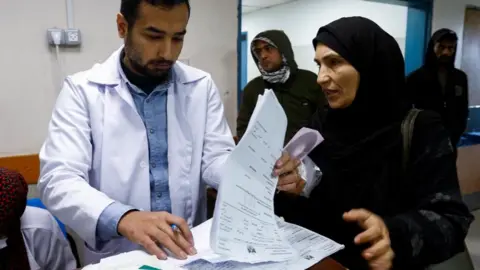 Reuters
Reuters
Some 3,000 names were removed from official lists of those killed
A Gazan health official, Zaher al-Wahidi, denied to the BBC that victims had vanished or that there was a lack of transparency, insisting: "The health ministry works towards having accurate data with high credibility.
"In every list that gets shared, there is a greater verification and revision of the list. We cannot say that the health ministry removes names. It's not a removal process, rather it is a revision and verification process."
Verifying data
So how are the statistics gathered and how accurate are they?
Until the first months of this war, the number of people killed in Gaza was calculated from counting bodies that arrived in hospitals - like those of Asma Hirzallah and her children.
Medics could log data for all deaths into a centralised computer system, which was based at a Ministry of Health office at al-Shifa hospital, with a back-up at al-Rantissi hospital.
However, as conditions became more chaotic and medical sites repeatedly came under attack, this method became less reliable. During the war, Israel says it has targeted hospitals – which have protected status under international law – because Hamas has used them to hide its fighters and infrastructure – something the armed group denies.
From the start of 2024, Gazan health officials introduced online forms which relatives could use to report their loved ones dead or missing.
According to Mr Wahidi, the head of statistics at the health ministry, most of the names which were recently removed from the official list as part of a new checking process had originally been submitted using these forms. He says that names which are taken off may later be added back
"A judicial committee was set up and it looks into all of the cases received," Mr Wahidi says. "To ensure credibility we verify the data so that it will be accurate."
During investigations by the judicial committee, some people were found to have died of natural causes – not directly because of the war. When Gazans die from lack of medical treatment, malnutrition or hyperthermia, Mr Wahidi clarifies "these cases are indirect and do not get added to the lists."
Other individuals were wrongly listed as dead but then found to have been among thousands of Gazans imprisoned by Israel.
Mr Wahidi confirms that in August and then October, a total of more than 3,000 names were removed from the list, saying this was a precautionary measure pending full checks.
For some pro-Israel groups, such as media watchdog HonestReporting, this was strong indication of "deliberate manipulation, not honest error".

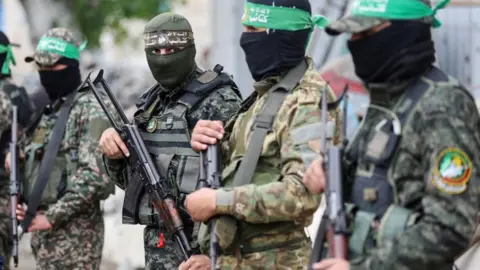 Reuters
Reuters
Israel accuses Hamas of inflating the number of Palestinian women and children killed
There had been a widespread presumption that only checked names were included on the online lists published.
"It seems like they're actually updating the lists more in real time, as more information appears," says Professor Mike Spagat of Royal Holloway College, chair of Every Casualty Counts, an independent civilian casualty monitoring organisation. "We should have regarded the previous lists as a little bit more provisional than I had assumed."
However, he says he detects no attempt by health officials to mislead and sees the changes as "a big clean-up operation".
He points out that the latest modifications to the list led to a small increase in the percentage of adult males among those killed, countering the idea that the original inclusion of the 3,000-plus names was done in an attempt to exaggerate the proportion of women and children.
Bodies under rubble
The Gaza health ministry says it has also recently audited data in its official fatalities list from hospital mortuaries for errors and omissions.
When deaths were registered by friends or neighbours, it says, they often did not know the ID numbers of those killed or their full names - which include the father and grandfather's names. In some cases, this resulted in the wrong people being marked as dead.
Thousands of bodies that are still under the rubble left by Israeli air strikes, as well as about 900 which are unidentified, are not currently included in the health ministry list, the ministry says.
However, the recent two-month ceasefire - which allowed hundreds of thousands of displaced Gazans to return to what was left of their homes - saw nearly 800 corpses being retrieved, identified and registered.
In late January, the BBC filmed workers from the Hamas-run Civil Defence agency as they set about retrieving human remains which had been left for months in Wadi Gaza - also known as the Netzarim Corridor – after a pullout by Israeli forces.
With no DNA testing available in Gaza, each corpse was given a serial number. Long forms were filled in to log the bones and clothing collected to try to identify the dead.
"We look for distinctive personal belongings: a watch, a necklace or an earring. When we search the bodies, it's very possible that we'll find a driver's licence or ID card," said Sameh Khalifa, who led the team.
"Even a broken tooth can be a distinguishing mark that will help a family recognise a missing loved one."
Combatant death tolls
Since the resumption of Israel's military offensive in Gaza on 18 March, the numbers killed have risen daily.
Israel periodically estimates the number of Palestinian fighters killed. At the start of this year, it assessed that 20,000 members of Hamas and Palestinian Islamic Jihad were among the dead. In mid-April it said there had been "more than 100 targeted eliminations" in the past month.
Israel does not provide its figures for civilian deaths in Gaza and has not officially challenged any of the names on the local health ministry casualty list.
The war began on 7 October 2023, when Hamas led a cross-border attack on southern Israel, killing about 1,200 people, mostly civilians, and taking some 250 people into captivity in Gaza. Since then, the Israeli military says that 408 of its soldiers have been killed in combat.
International journalists, including the BBC, are blocked by Israel from entering Gaza independently, so are unable to verify figures from either side.
We rely heavily on local Palestinian journalists working with us to access information about deadly attacks - interviewing witnesses as well as visiting bomb sites and hospital mortuaries to film footage, which is shared with us.
Overall, the numbers killed in the past year and a half dwarf those from previous rounds of fighting in the decades-old Israel-Palestinian conflict and yet, for the moment, there is no end in sight to the war.

 5 hours ago
3
5 hours ago
3
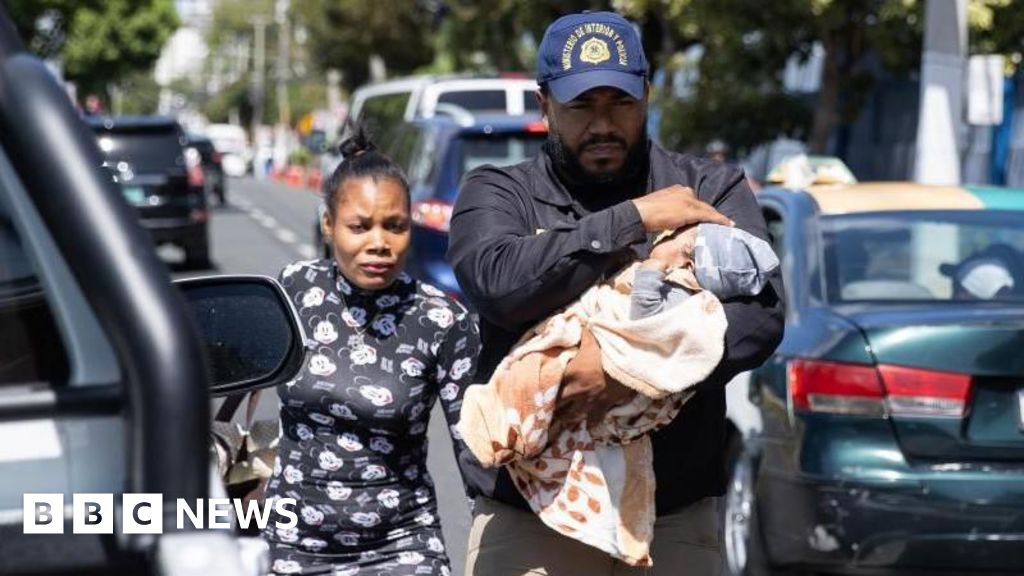
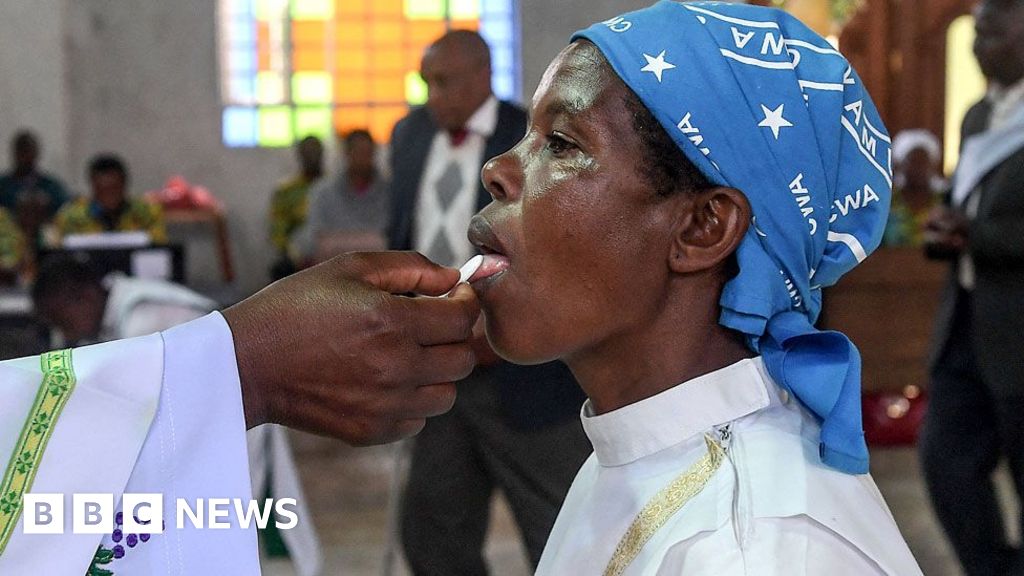






 English (US) ·
English (US) ·